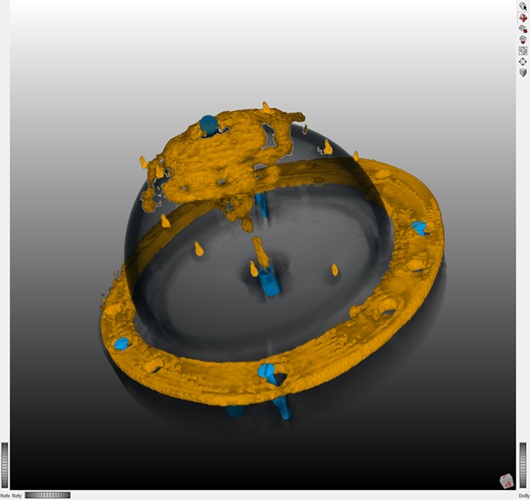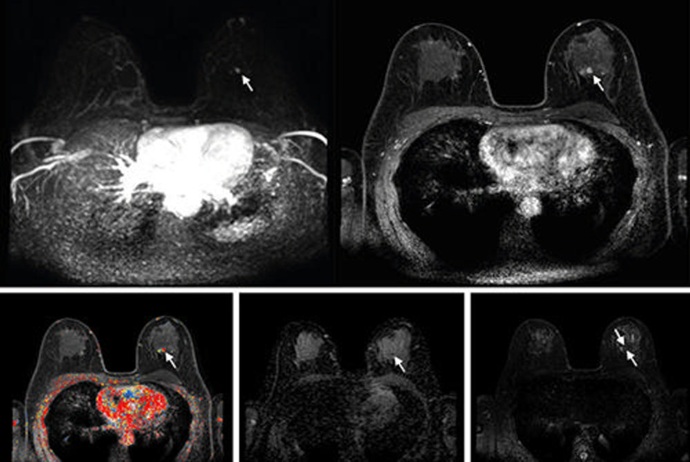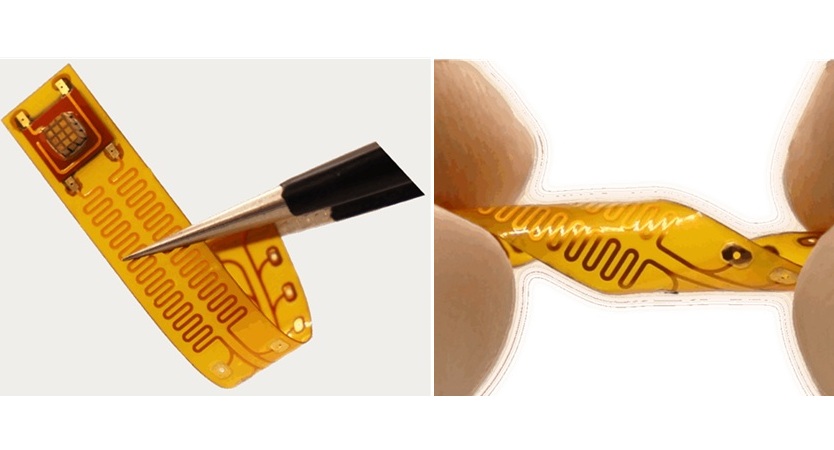Radioactive Cement Safer for Spinal Tumor Treatment
|
By MedImaging International staff writers Posted on 01 Mar 2021 |
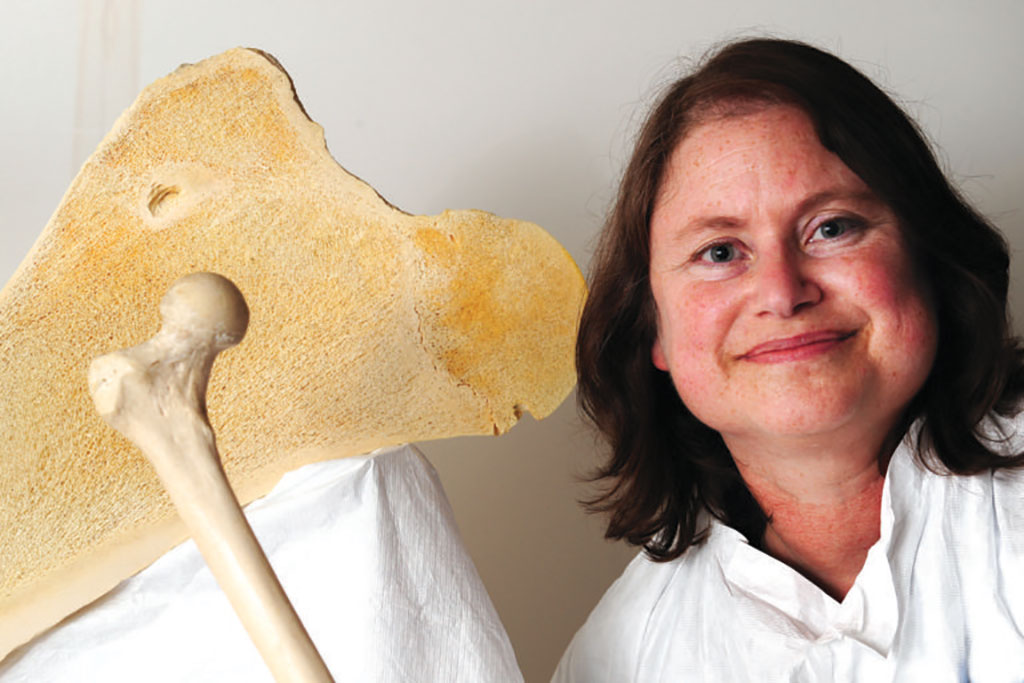
Image: Professor Joyce Keyak, co-developer of Spine-Rad brachytherapy cement (Photo courtesy of UCI)
Injecting brachytherapy cement into bone is a safer alternative to conventional radiation therapy (RT) for spinal tumors, according to a new study.
Developed by researchers at the University of California Irvine (UCI, USA) Spine-Rad brachytherapy cement includes radioactive isotopes that are dispersed evenly, so that radiologists don’t need to measure the total amount of radioactivity; the dose delivered to the tumor is independent of the volume of cement and the amount injected. To validate the function of the cement, the researchers conducted animal and computational studies to evaluate the short-term efficacy, safety, migration of radioactivity into blood, urine, or feces; and the radiation dose from phosphorus-32 (P-32) emissions to the spinal cord and soft tissues.
The results showed that at 17 weeks post-injection, physical examinations were all normal, and no activity was detected in blood, urine or feces. The researchers found no evidence of the P-32 isotope in the circulating blood, no changes in blood work related to radioactivity, no neurological deficits, and that radiation dose rates outside the injection site were minimal. The study was presented at the annual meeting of the Orthopaedic Research Society, held virtually during February 2021.
“Currently, multiple sessions of external beam radiation are used to treat cancer that has spread to the spine. But with the brachytherapy bone cement, a single injection can provide an equivalent, targeted tumor treatment with significantly less threat to the spinal cord and nerves,” said senior author and study presenter Professor Joyce Keyak, PhD. “You can have this procedure and be done with it. And you can do it when tumors are smaller to prevent further bone and spinal cord damage, while limiting the pain and side effects that patients often feel.”
Cancers that begin in the breast, prostate, lung, thyroid and kidney can spread to the vertebrae and weaken them while causing pain to the patient. Gamma radiation therapy to kill the tumor is toxic to bone, spinal cells and nerves, leading to paralysis. Because of this, RT is often delayed in patients with metastatic cancer as long as possible, leaving them in pain as tumors progress.
Related Links:
University of California Irvine
Developed by researchers at the University of California Irvine (UCI, USA) Spine-Rad brachytherapy cement includes radioactive isotopes that are dispersed evenly, so that radiologists don’t need to measure the total amount of radioactivity; the dose delivered to the tumor is independent of the volume of cement and the amount injected. To validate the function of the cement, the researchers conducted animal and computational studies to evaluate the short-term efficacy, safety, migration of radioactivity into blood, urine, or feces; and the radiation dose from phosphorus-32 (P-32) emissions to the spinal cord and soft tissues.
The results showed that at 17 weeks post-injection, physical examinations were all normal, and no activity was detected in blood, urine or feces. The researchers found no evidence of the P-32 isotope in the circulating blood, no changes in blood work related to radioactivity, no neurological deficits, and that radiation dose rates outside the injection site were minimal. The study was presented at the annual meeting of the Orthopaedic Research Society, held virtually during February 2021.
“Currently, multiple sessions of external beam radiation are used to treat cancer that has spread to the spine. But with the brachytherapy bone cement, a single injection can provide an equivalent, targeted tumor treatment with significantly less threat to the spinal cord and nerves,” said senior author and study presenter Professor Joyce Keyak, PhD. “You can have this procedure and be done with it. And you can do it when tumors are smaller to prevent further bone and spinal cord damage, while limiting the pain and side effects that patients often feel.”
Cancers that begin in the breast, prostate, lung, thyroid and kidney can spread to the vertebrae and weaken them while causing pain to the patient. Gamma radiation therapy to kill the tumor is toxic to bone, spinal cells and nerves, leading to paralysis. Because of this, RT is often delayed in patients with metastatic cancer as long as possible, leaving them in pain as tumors progress.
Related Links:
University of California Irvine
Latest Nuclear Medicine News
- New Camera Sees Inside Human Body for Enhanced Scanning and Diagnosis
- Novel Bacteria-Specific PET Imaging Approach Detects Hard-To-Diagnose Lung Infections
- New Imaging Approach Could Reduce Need for Biopsies to Monitor Prostate Cancer
- Novel Radiolabeled Antibody Improves Diagnosis and Treatment of Solid Tumors
- Novel PET Imaging Approach Offers Never-Before-Seen View of Neuroinflammation
- Novel Radiotracer Identifies Biomarker for Triple-Negative Breast Cancer
- Innovative PET Imaging Technique to Help Diagnose Neurodegeneration
- New Molecular Imaging Test to Improve Lung Cancer Diagnosis
- Novel PET Technique Visualizes Spinal Cord Injuries to Predict Recovery
- Next-Gen Tau Radiotracers Outperform FDA-Approved Imaging Agents in Detecting Alzheimer’s
- Breakthrough Method Detects Inflammation in Body Using PET Imaging
- Advanced Imaging Reveals Hidden Metastases in High-Risk Prostate Cancer Patients
- Combining Advanced Imaging Technologies Offers Breakthrough in Glioblastoma Treatment
- New Molecular Imaging Agent Accurately Identifies Crucial Cancer Biomarker
- New Scans Light Up Aggressive Tumors for Better Treatment
- AI Stroke Brain Scan Readings Twice as Accurate as Current Method
Channels
Radiography
view channel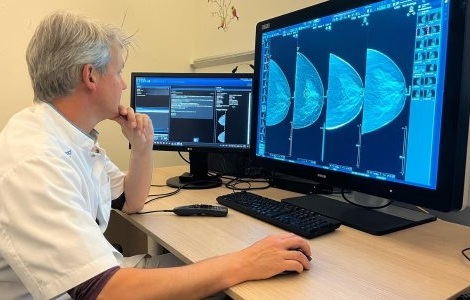
AI Hybrid Strategy Improves Mammogram Interpretation
Breast cancer screening programs rely heavily on radiologists interpreting mammograms, a process that is time-intensive and subject to errors. While artificial intelligence (AI) models have shown strong... Read more
AI Technology Predicts Personalized Five-Year Risk of Developing Breast Cancer
Breast cancer remains one of the most common cancers among women, with about one in eight receiving a diagnosis in their lifetime. Despite widespread use of mammography, about 34% of patients in the U.... Read moreMRI
view channel
AI-Assisted Model Enhances MRI Heart Scans
A cardiac MRI can reveal critical information about the heart’s function and any abnormalities, but traditional scans take 30 to 90 minutes and often suffer from poor image quality due to patient movement.... Read more
AI Model Outperforms Doctors at Identifying Patients Most At-Risk of Cardiac Arrest
Hypertrophic cardiomyopathy is one of the most common inherited heart conditions and a leading cause of sudden cardiac death in young individuals and athletes. While many patients live normal lives, some... Read moreUltrasound
view channel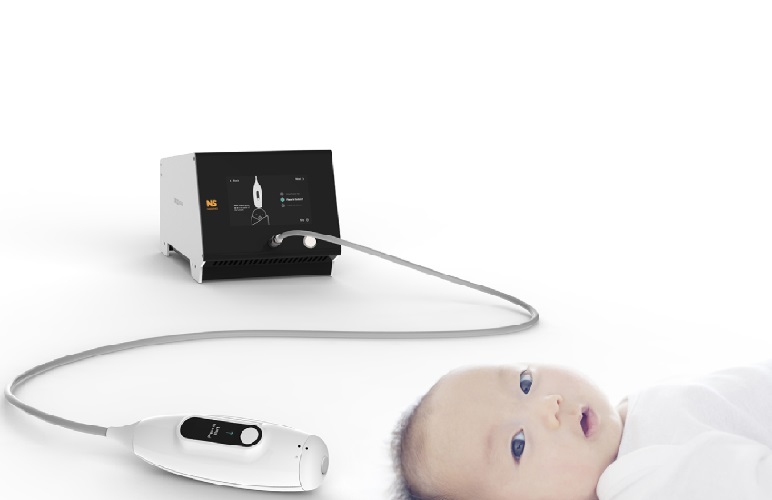
Non-Invasive Ultrasound-Based Tool Accurately Detects Infant Meningitis
Meningitis, an inflammation of the membranes surrounding the brain and spinal cord, can be fatal in infants if not diagnosed and treated early. Even when treated, it may leave lasting damage, such as cognitive... Read more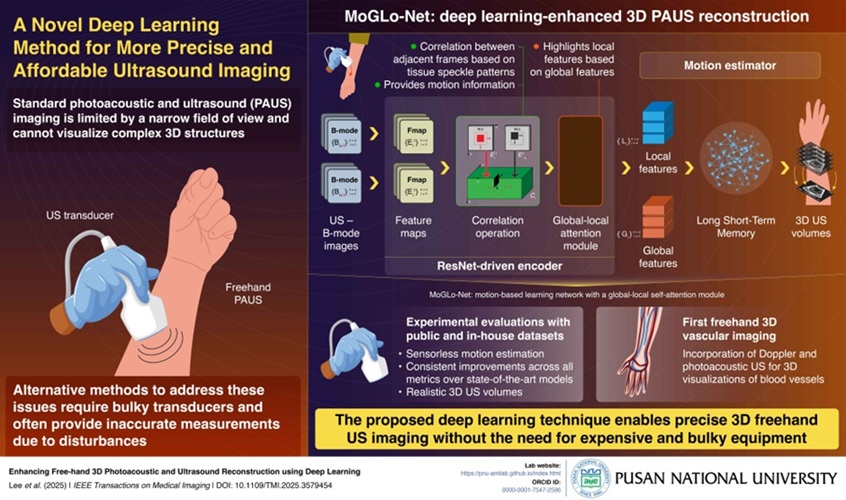
Breakthrough Deep Learning Model Enhances Handheld 3D Medical Imaging
Ultrasound imaging is a vital diagnostic technique used to visualize internal organs and tissues in real time and to guide procedures such as biopsies and injections. When paired with photoacoustic imaging... Read moreGeneral/Advanced Imaging
view channel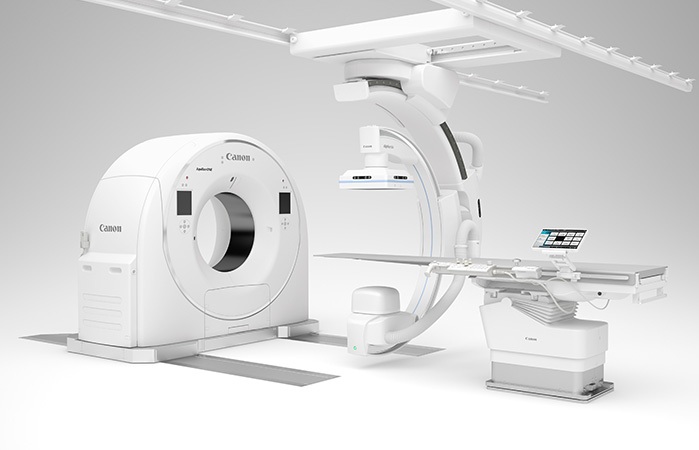
Cutting-Edge Angio-CT Solution Offers New Therapeutic Possibilities
Maintaining accuracy and safety in interventional radiology is a constant challenge, especially as complex procedures require both high precision and efficiency. Traditional setups often involve multiple... Read more
Extending CT Imaging Detects Hidden Blood Clots in Stroke Patients
Strokes caused by blood clots or other mechanisms that obstruct blood flow in the brain account for about 85% of all strokes. Determining where a clot originates is crucial, since it guides safe and effective... Read more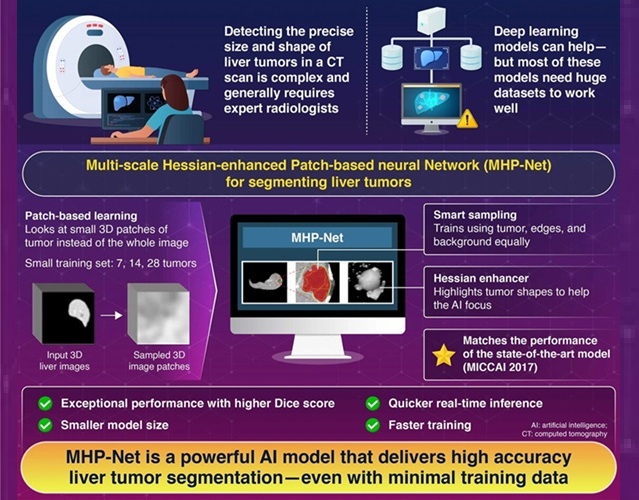
Groundbreaking AI Model Accurately Segments Liver Tumors from CT Scans
Liver cancer is the sixth most common cancer worldwide and a leading cause of cancer-related deaths. Accurate segmentation of liver tumors is critical for diagnosis and therapy, but manual methods by radiologists... Read more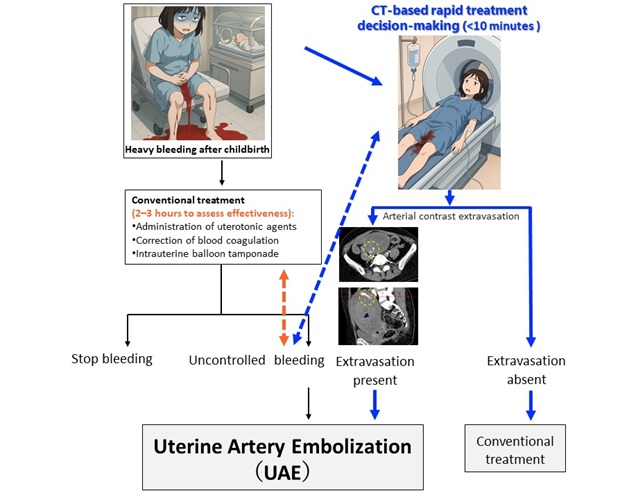
New CT-Based Indicator Helps Predict Life-Threatening Postpartum Bleeding Cases
Postpartum hemorrhage (PPH) is a leading cause of maternal death worldwide. While most cases can be controlled with medications and basic interventions, some become life-threatening and require invasive treatments.... Read moreImaging IT
view channel
New Google Cloud Medical Imaging Suite Makes Imaging Healthcare Data More Accessible
Medical imaging is a critical tool used to diagnose patients, and there are billions of medical images scanned globally each year. Imaging data accounts for about 90% of all healthcare data1 and, until... Read more
Global AI in Medical Diagnostics Market to Be Driven by Demand for Image Recognition in Radiology
The global artificial intelligence (AI) in medical diagnostics market is expanding with early disease detection being one of its key applications and image recognition becoming a compelling consumer proposition... Read moreIndustry News
view channel
GE HealthCare and NVIDIA Collaboration to Reimagine Diagnostic Imaging
GE HealthCare (Chicago, IL, USA) has entered into a collaboration with NVIDIA (Santa Clara, CA, USA), expanding the existing relationship between the two companies to focus on pioneering innovation in... Read more
Patient-Specific 3D-Printed Phantoms Transform CT Imaging
New research has highlighted how anatomically precise, patient-specific 3D-printed phantoms are proving to be scalable, cost-effective, and efficient tools in the development of new CT scan algorithms... Read more
Siemens and Sectra Collaborate on Enhancing Radiology Workflows
Siemens Healthineers (Forchheim, Germany) and Sectra (Linköping, Sweden) have entered into a collaboration aimed at enhancing radiologists' diagnostic capabilities and, in turn, improving patient care... Read more












